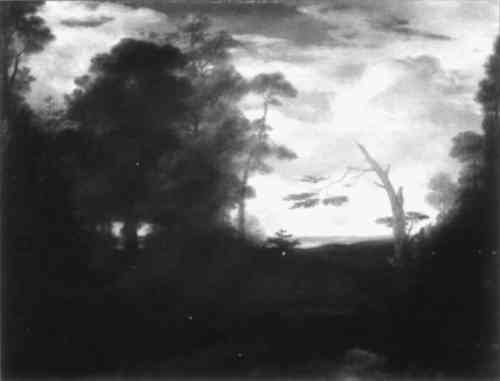WASHINGTON ALLSTON: POEMS, VEILS, AND “TITIAN'S DIRT”JOYCE HILL STONER
1 HAZE AND MISTY VEILSALLSTON'S The Spanish Maid like several of his other works, is both a painting (figure 1) and a poem (appendix 1), and the two must be considered in tandem. H.W.L. Dana (1943, 49) noted that the conception of the poem and the picture had been simultaneous in Allston's mind. In Allston's poem, Inez is sitting on an isolated grassy knoll, waiting for her lover Isidor, who has been gone for five months. She is suspended between dreams of his valiant fall and a longing for his safe return. In the painting, there is deep recession of space, although the actual landscape perspective is a bit ambiguous. The entry in the Metropolitan Museum of Art catalog (in press) reads: “Through an extraordinary blend of blue, red, and green, the landscape is now a confusing blur, and one has trouble imagining its original appearance.” The “blur” was probably quite intentional as the poem
The “twenty times” of glazing applications are likely to have contributed to the severe crackle pattern throughout the painting. In order to carry out multiple glazings, Allston often added Japan gold size drier to his medium—a mixture of Kauri gum (a hard resin) and turpentine, boiled oil, litharge, red lead, and manganese dioxide (a strong drying agent often used by sign painters). He also added megilp to his paints—a mixture of mastic, oil, and turpentine that unfortunately darkens with age but has a buttery consistency enjoyable to paint with and maintains a “vernished” look for the oil paint as one is working. Megilp can also cause fissure cracks if used heavily. Earlier landscapes such as Elijah in the Wilderness (1818, Museum of Fine Arts, Boston), which Allston told Thomas Sully he painted in colors ground in skimmed milk, show more precision and linearity, but Allston later became interested in haze, mystery, blurred outlines, and the effect of light and atmosphere. In Landscape, American Scenery: Time, Afternoon with a Southwest Haze(figure 2), the soft misty effect of the distant trees was created by reddish brown asphaltum glazes with little solid impasto beneath (Jones 1947, 9).
William Page (1845, 201) uses the word “veil” in discussing Allston's techniques in the Broadway Journal. He writes, perhaps with some professional jealousy, about Allston's color, indicating, “I cannot subscribe to his perfection in color, especially in his later works. Many think Titian scarcely finer, if so, I have overrated Titian.” But in discussing light colors passed over darker ones, Page notes that Allston “doubted this could have the look of a white veil,” to which Page replies, “Is not the skin in some degree a veil?” E. P. Richardson (1948, 147) notes that one of Allston's landscapes was “seen through the veil of memory and transposed to another plane by having lived long within the mind.” The esthetic of Allston's veil seems to be not only blur from mists and haze but also technical veils of paint and the gentle blur of the remembrance of things past. The female figure in The Spanish Maid may be based on Allston's memory of his first wife Ann, who died in 1815. The figure is very similar to his Life Study of Ann Channing (ca. 1812–15, Massachusetts Historical Society). |

